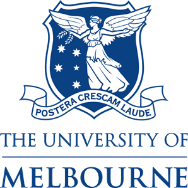Australia’s spacecraft and satellites will better survive damaging radiation and extreme conditions thanks to a $2.5 million grant, for space science to be led by the Australian National University (ANU).
The grant creates a national network of space testing facilities and brings Australia into an elite group of countries with this kind of advanced capability.
Director of ANU Institute for Space Professor Anna Moore said the new funding and upgraded facilities would help “launch Australia’s burgeoning space industry to another level”.
“Australia’s space industry is growing. Upgraded facilities will mean we can make sure the payloads we send into space, including satellites and spacecraft, are able to survive before they blast off,” she said.
Damage to components caused by the intense radiation in space is a major risk factor for space missions.
A large part of the funding will go to the Heavy Ion Accelerator Facility (HIAF) at ANU, allowing extreme radiation testing of components destined for space, like electronics, sensors and solar cells.
The funding will enable the creation of a new beamline, in which technology can be subjected to radiation similar to what it would experience in space.
It will offer a wide range of ion beams ranging from protons – the main component of the solar wind – up to heavy ions. Although rarer than protons, heavy ions have the potential to do much more damage to electronics.
The new beam line may also open many other possibilities beyond testing components destined for space, including in space medicine, cancer research, and cutting-edge radiation detection.
Professor Mahananda Dasgupta, director of the ANU Heavy Ion Accelerator Facility said the sovereign capability for ion-beam testing that the accelerator provides is unique.
“This $100M facility is the highest energy ion accelerator in Australia, and will act as a springboard to propel the Australian space industry to the next level.”
“The aim is to deliver accelerated ions ranging from a few hundred per second up to a thousand billion per second, with velocities up to 20% of the speed of light.
“The entirely new beam line will be built within a year,” she said.



